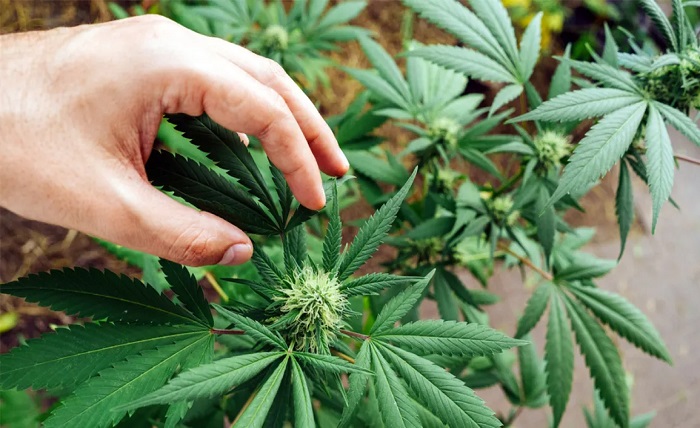The Science behind the Different Types of Cannabis Highs

The cannabis high is a unique experience that can vary depending on the person and the type of cannabis they’re using. The two most common types of cannabis are indica and sativa, which produce different effects. Indica strains are known for their relaxing, sedative effects while sativa strains tend to be more uplifting and cerebral.
Cannabis highs can also vary depending on how the plant is grown and processed the ounce of weed taken. For example, cannabis that’s been grown indoors under artificial lights will usually have a different effect than cannabis that’s been grown outdoors in natural sunlight. Similarly, cannabis that’s been processed into hash or oil will usually produce a more potent effect than regular marijuana buds.
Generally speaking, the effects of a cannabis high can be divided into two main categories: physical and mental. Physical effects include things like increased heart rate, dry mouth, red eyes, and slowed reaction time. Mental effects include changes in mood, perception, and consciousness. Some people report feeling more relaxed after smoking cannabis while others say it makes them feel more energetic or even paranoid.
Of course, everyone experiences Cannabis high differently so it’s impossible to say exactly what you’ll feel when you smoke it. However, understanding the different factors that can affect your height can help you choose the right strain for your needs and better control your experience.
Different Types of Cannabis Highs:
There are three primary types of cannabis highs: heady, body, and balanced. Heady highs are cerebral and uplifting, perfect for when you want to get creative or socialize. Body highs are relaxing and can help with pain relief, making them ideal for unwinding after a long day. Balanced highs provide a mix of both heady and body effects, giving you a well-rounded experience.
So, what’s the difference between these different types of highs? Let’s take a closer look at the science behind each one.
Heady Highs:
Heady highs are caused by cannabinoids like THC that interact with the brain’s cannabinoid receptors. This interaction leads to changes in perception, mood, and cognition. Heady highs tend to be cerebral and uplifting, making them perfect for when you want to get creative or socialize.
Body Highs:
Body highs are caused by cannabinoids like CBD that interact with the body’s cannabinoid receptors. This interaction leads to changes in mood, appetite, pain sensation, and inflammation. Body highs tend to be relaxing and can help with pain relief, making them ideal for unwinding after a long day.
Balanced Highs:
Balanced highs provide a mix of both heady and body effects thanks to cannabinoids like THCV that interact with both the brain’s cannabinoid receptors and the body.
The Science behind the Different Types of Cannabis Highs
Cannabis is a complex plant with hundreds of different compounds, many of which are still being studied. These compounds interact with our bodies in various ways, producing different effects – what we know as the “high.”
There are three main types of cannabis high: psychoactive, sedative, and medicinal. Each type has its own unique effects, depending on the specific compounds present in the plant.
The psychoactive high is caused by THC, the main psychoactive compound in cannabis. THC binds to receptors in the brain and produces feelings of euphoria, relaxation, and altered perception. This type of high is typically associated with smoking or vaporizing cannabis.
The sedative high is caused by CBD, another major compound in cannabis. Unlike THC, CBD does not bind to receptors in the brain but instead interacts with the body’s natural systems. CBD can produce feelings of relaxation and sleepiness, making it a popular choice for those looking to wind down at the end of the day. This type of high is typically associated with ingesting cannabis edibles or tinctures.
Finally, there is the medicinal high, which is caused by a variety of different compounds found in cannabis (including both THC and CBD). The medicinal high is typically characterized by relief from pain or other symptoms without significant alteration to one’s mental state. This type of high is often sought after by those using cannabis for therapeutic purposes.
Factors That Affect the Cannabis High
There are many different factors that can affect the cannabis high. The most important factor is the type of cannabis you consume. Different strains of cannabis can produce different effects. For example, Indica strains are known for their relaxing and sedative effects, while Sativa strains are known for their uplifting and energizing effects.
Other important factors that can affect your high include the method of consumption, the THC content of the cannabis, and your own individual physiology. For example, smoking cannabis will generally result in a more immediate and intense high than eating an edible. And if you have a higher tolerance to THC, you may not get as high from consuming the same amount of cannabis as someone with a lower tolerance.
So if you’re wondering why your last cannabis experience was different than expected, it could be due to any number of these factors. The best way to ensure a consistent and enjoyable high is to experiment with different strains and consumption methods until you find what works best for you.
Neurochemistry of the Cannabis High
The psychoactive effects of cannabis are caused by a variety of neurochemical processes. The most well-known of these is the action of THC, the main psychoactive compound in cannabis, on the brain’s cannabinoid receptors. However, other compounds in cannabis, including CBD and terpenes, also play a role in the experience of the cannabis high.
THC binds to cannabinoid receptors in the brain, which modulates a variety of cognitive and physiological processes. The exact nature of these effects depends on which parts of the brain are affected and how THC interacts with other neurotransmitter systems. In general, THC produces feelings of euphoria and relaxation, as well as changes in perception, mood, and cognition.
CBD does not bind directly to cannabinoid receptors but instead modulates their activity indirectly. CBD also affects other neurotransmitter systems in the brain, including the serotonin system. This may explain why CBD is effective at reducing anxiety and promoting relaxation without causing the psychoactive effects associated with THC.
Terpenes are aromatic compounds found in many plants, including cannabis. These compounds can interact with cannabinoid receptors and affect neurotransmitter systems in the brain. Different terpenes produce different effects, but some common ones include increased alertness (limonene), improved mood (linalool), and pain relief (beta-caryophyllene).
How to Achieve a Desired Cannabis High
Different cannabis strains offer different types of highs. Some strains are more uplifting and energizing, while others are more relaxing and sedating. Knowing which type of high you want can help you choose the right strain.
There are a few things to keep in mind when trying to achieve a desired cannabis high:
- The THC content of a strain will determine its effects.
- The terpene profile of a strain can enhance or change its effects.
- The method of consumption can also affect the type of high you experience.
Alternatives to Smoking Cannabis
There are many alternatives to smoking cannabis, including:
- -Eating cannabis edibles
- -Applying cannabis topicals
- -Using a cannabis vaporizer
- -Taking cannabis oil orally
Making cannabis tea
Each method of consuming cannabis will result in a different type of high. Edibles, for instance, tend to produce a more relaxed and body-focused high, while smoking or vaporizing cannabis will result in a more cerebral and heady experience. Topicals provide localized relief without any psychoactive effects.
Cannabis oil is becoming increasingly popular as a means of consuming cannabinoids. It can be taken orally or used to make edibles. Cannabis tea is another popular way to consume cannabinoids, especially among those who are looking for a mellower and relaxing experience.
Conclusion
As evidenced, the science behind the different types of cannabis highs is a complex one. The combination of terpenes and cannabinoids plays an important role in determining which effects you will experience when consuming any type of cannabis strain. Understanding these components can help you to better tailor your own personal experience with the plant and choose strains that are more likely to provide the desired effect. With this knowledge, we hope that you now feel prepared to make informed choices about which type of high best suits your needs!




